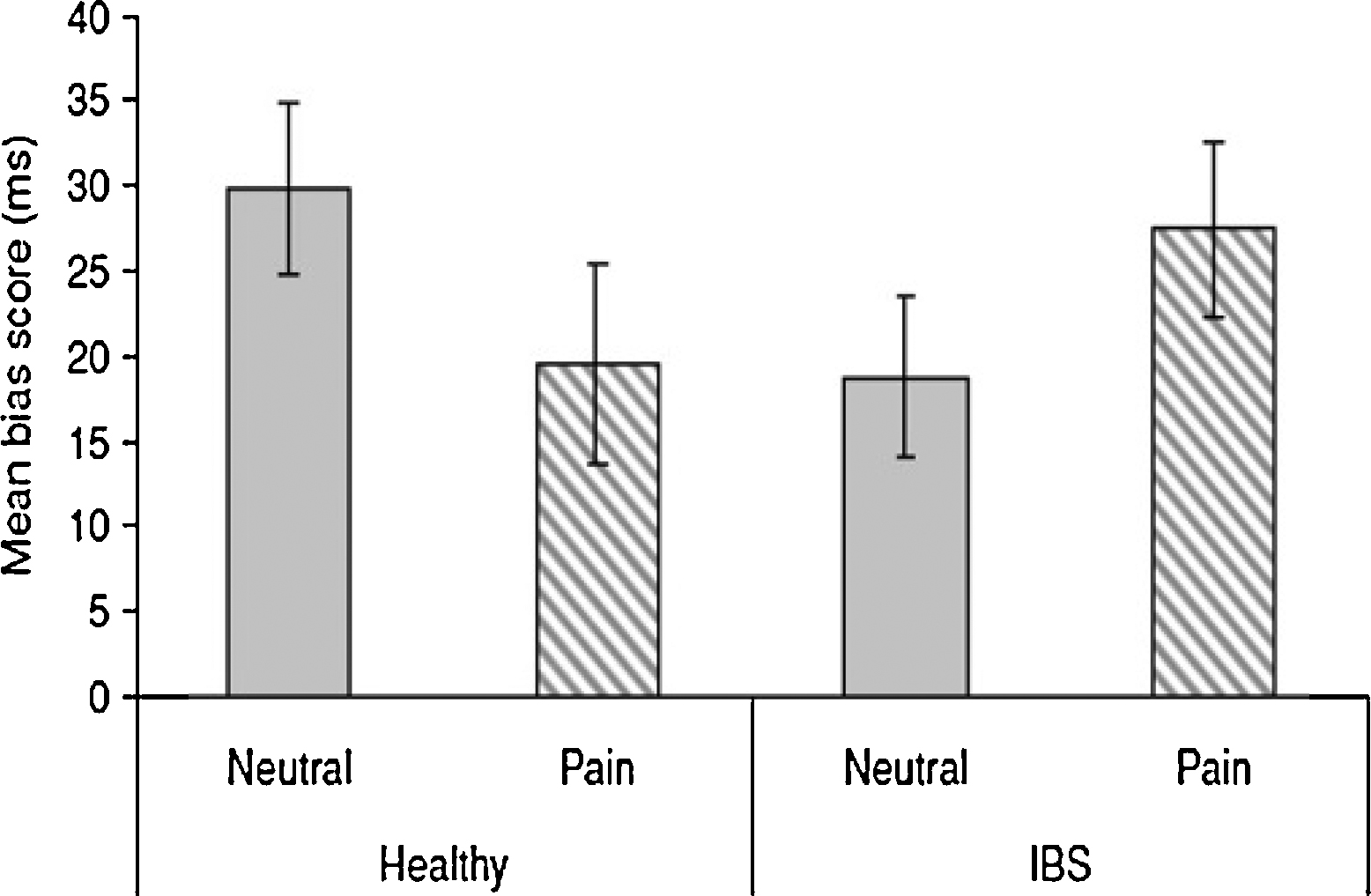No CrossRef data available.
Published online by Cambridge University Press: 23 March 2020
Theoretical controversy surrounds the issue of the extent to which cognitive processes can be identified which are characteristic of patients with irritable Bowel syndrome (IBS). The issue is important because particular patterns of idiosyncrasies would suggest tailored therapeutic interventions.
To map the processing of pain information in IBS and healthy participants in relation to physical and social threat, using latency as well as frequency metrics.
Participants (20 with IBS and 33 controls) were tested in an extended exogenous cuing paradigm whose derived measures included assessments of bias, engagement and disengagement. They also completed a battery of health and illness activity tests.
There was a significant interaction between bias in processing of pain (physical threat) and of neutral stimuli, as shown on Fig. 1. Further significant idiosyncrasies were observed in the relations between measures of attention and levels both of symptoms and of illness behaviour.
Detailed evidence was obtained of anomalies in attention in IBS. The results may be interpreted in terms of interactive feedback between pain perception in relation to the gut, pain-specific attentional processes, and health behaviour. It will be discussed how mindfulness based cognitive therapy can be used as an intervention to disrupt this feedback.
The authors have not supplied their declaration of competing interest.
Fig. 1
Attentional bias in IBS and healthy groups with pain and neutral stimuli. Target in the same (valid) or different (invalid) position as the cue, bias = (RT invalid − RT valid).

Comments
No Comments have been published for this article.